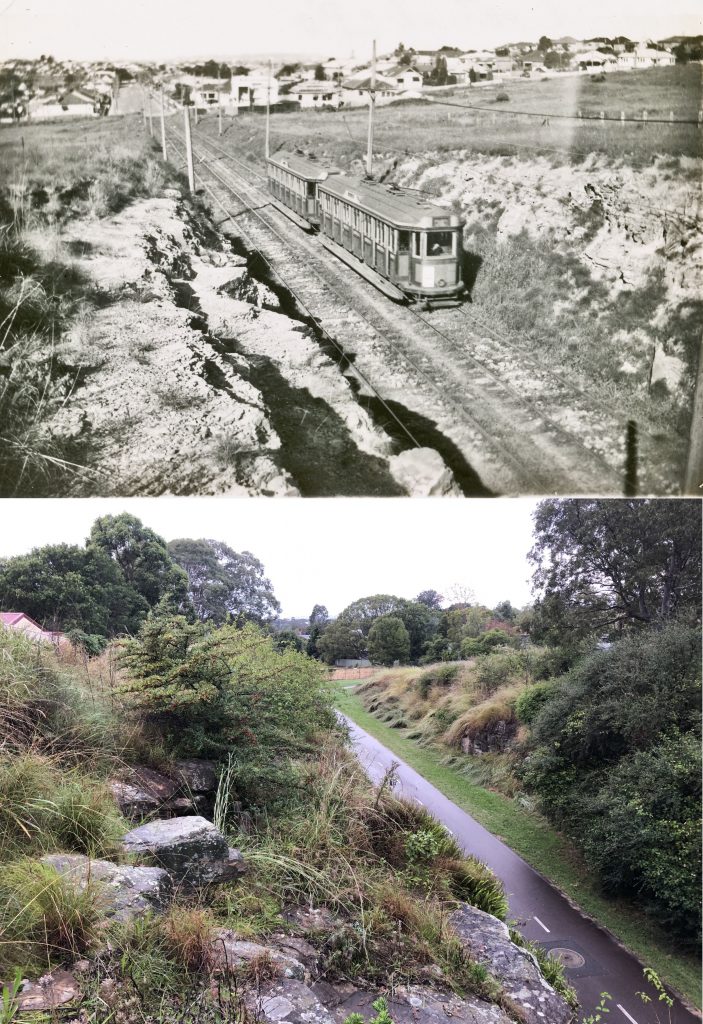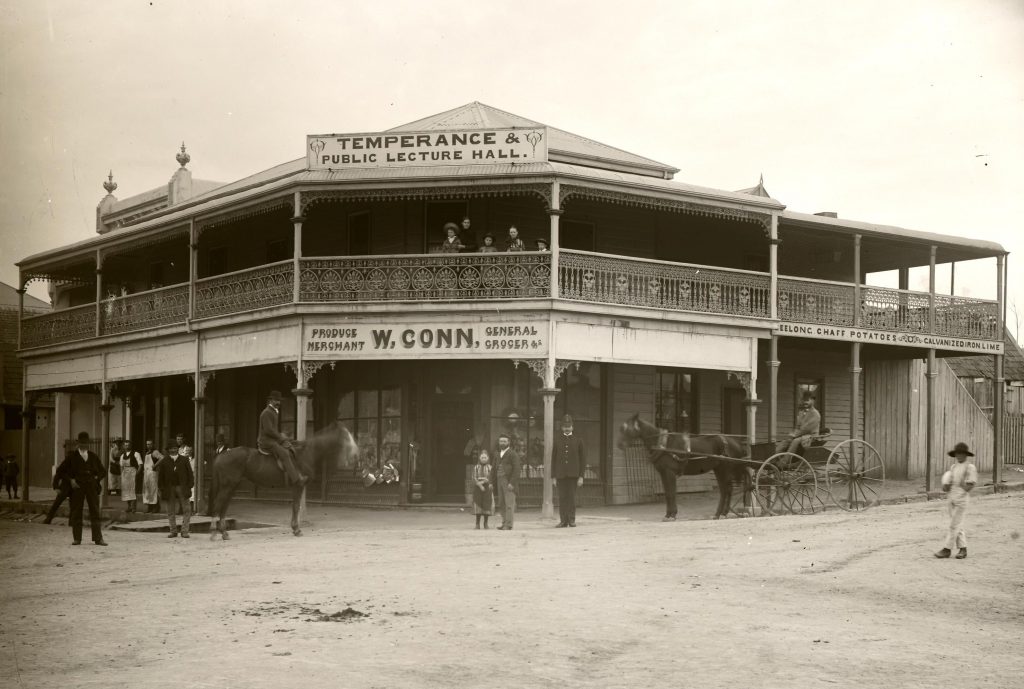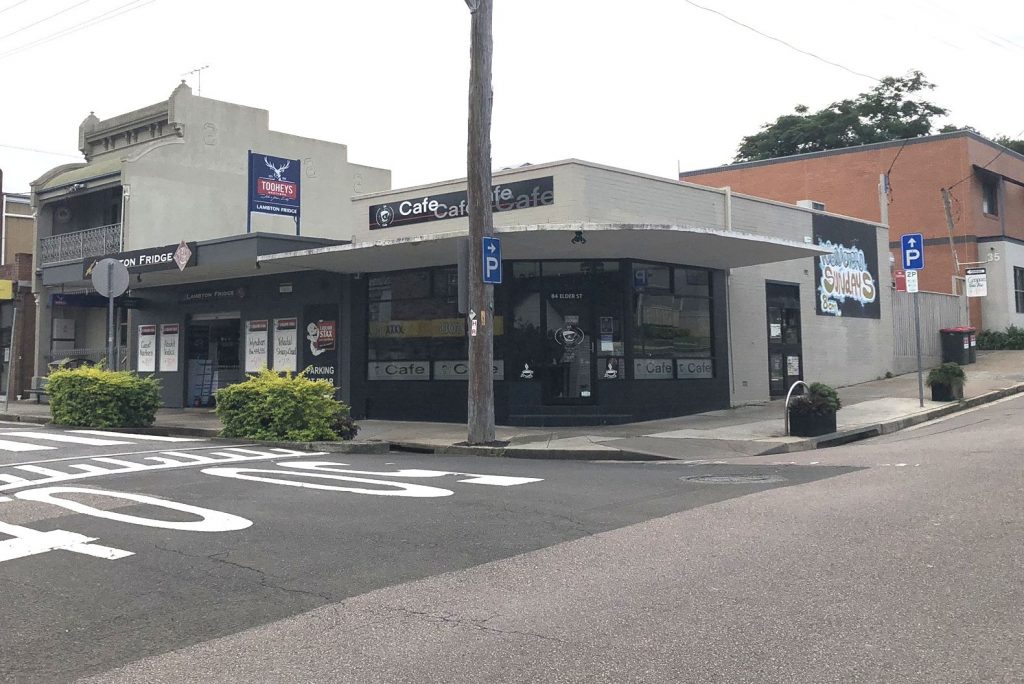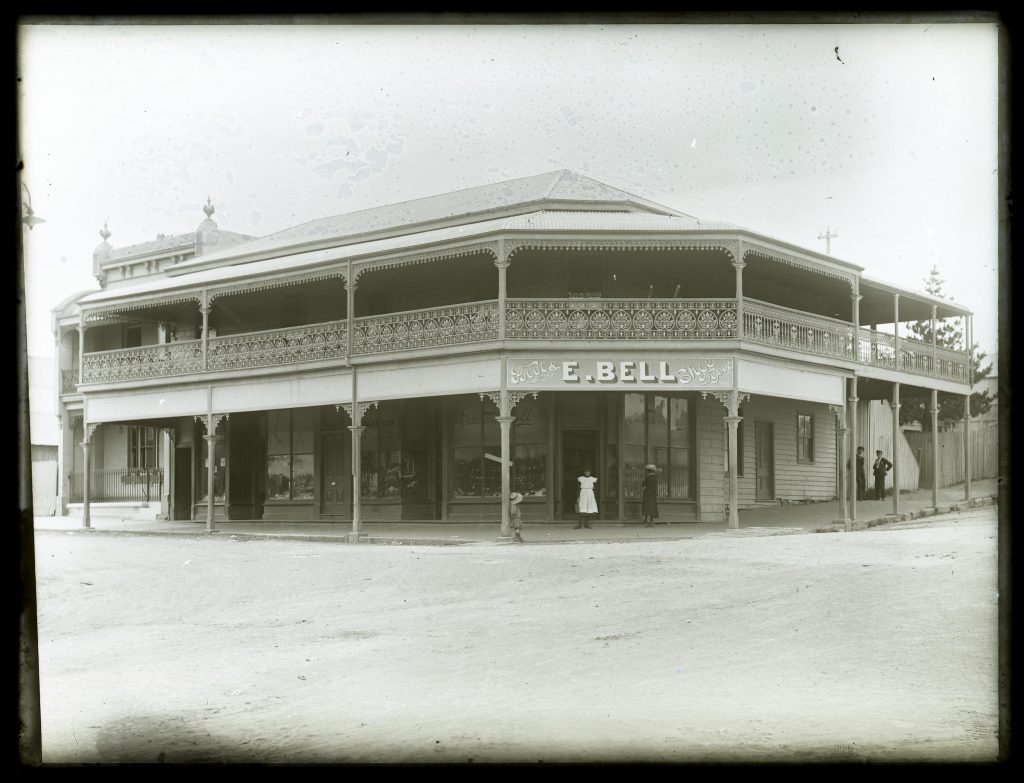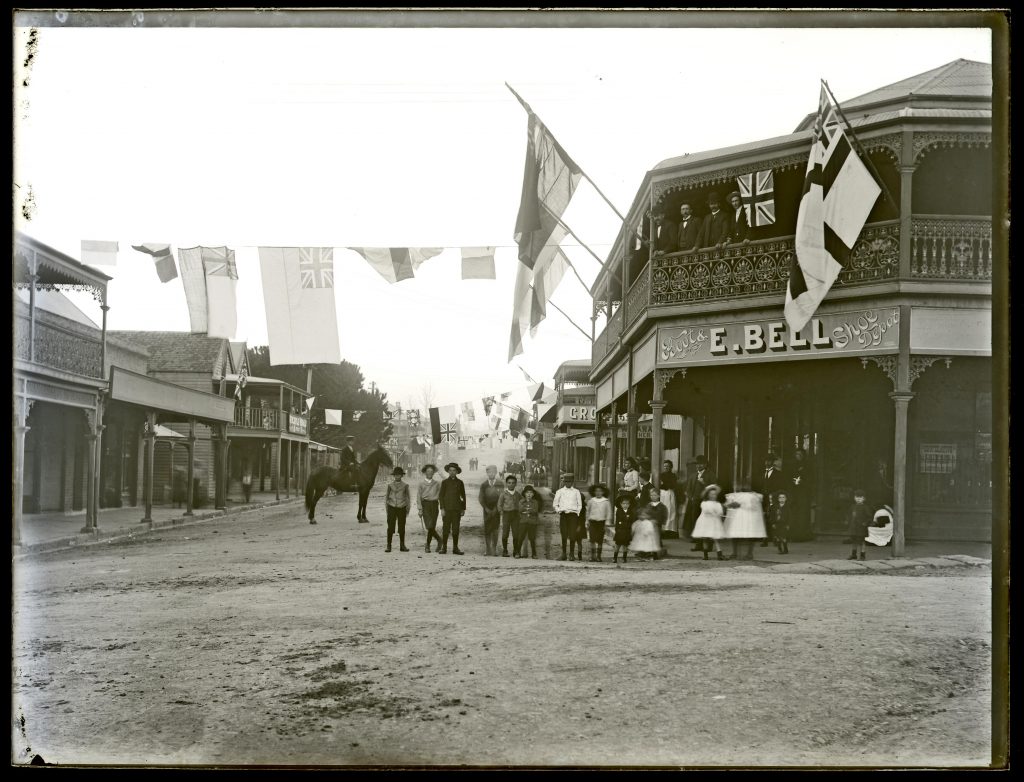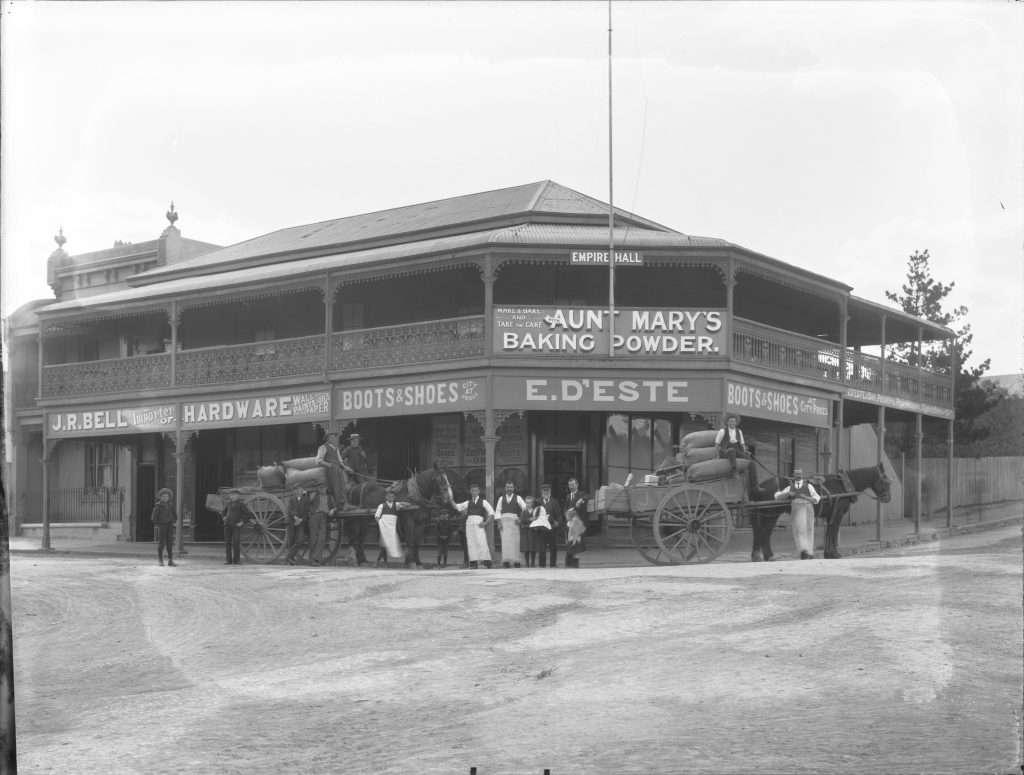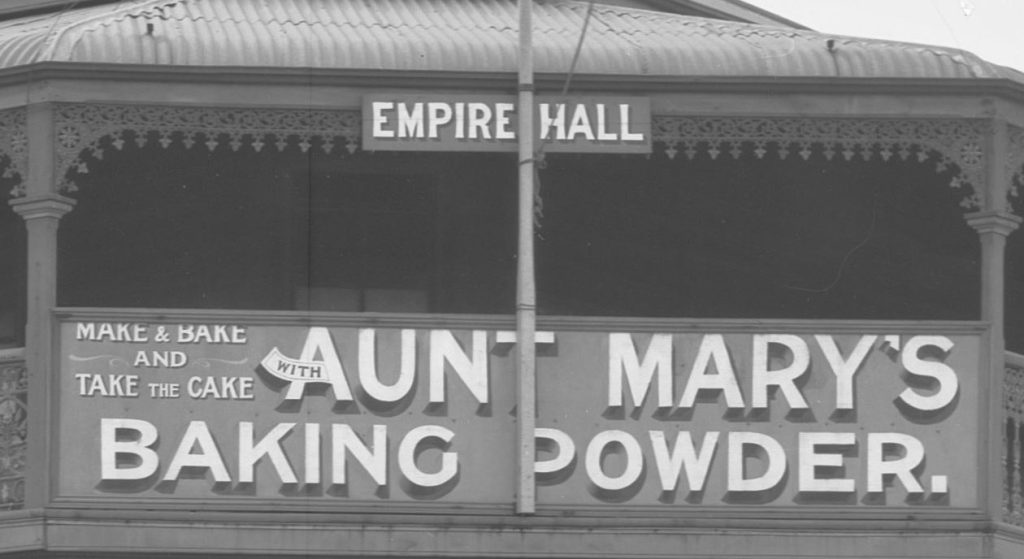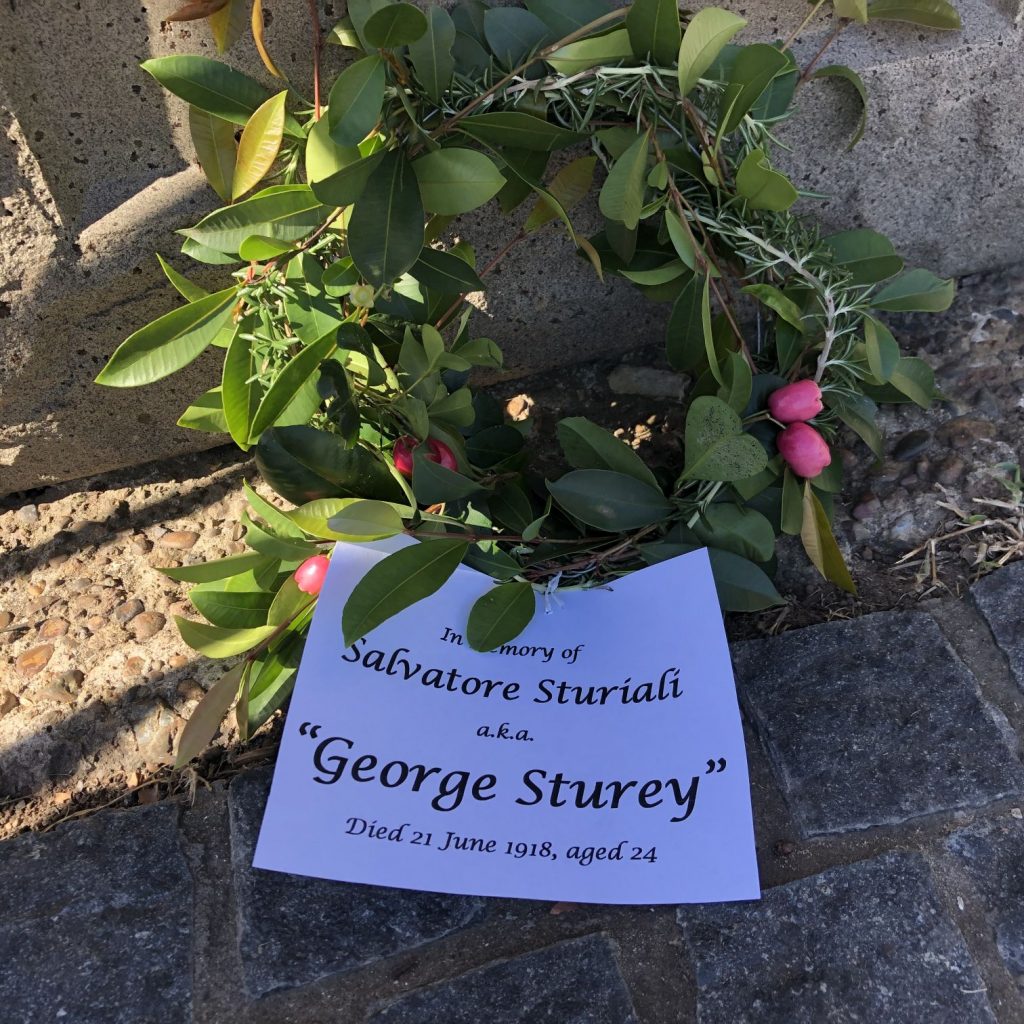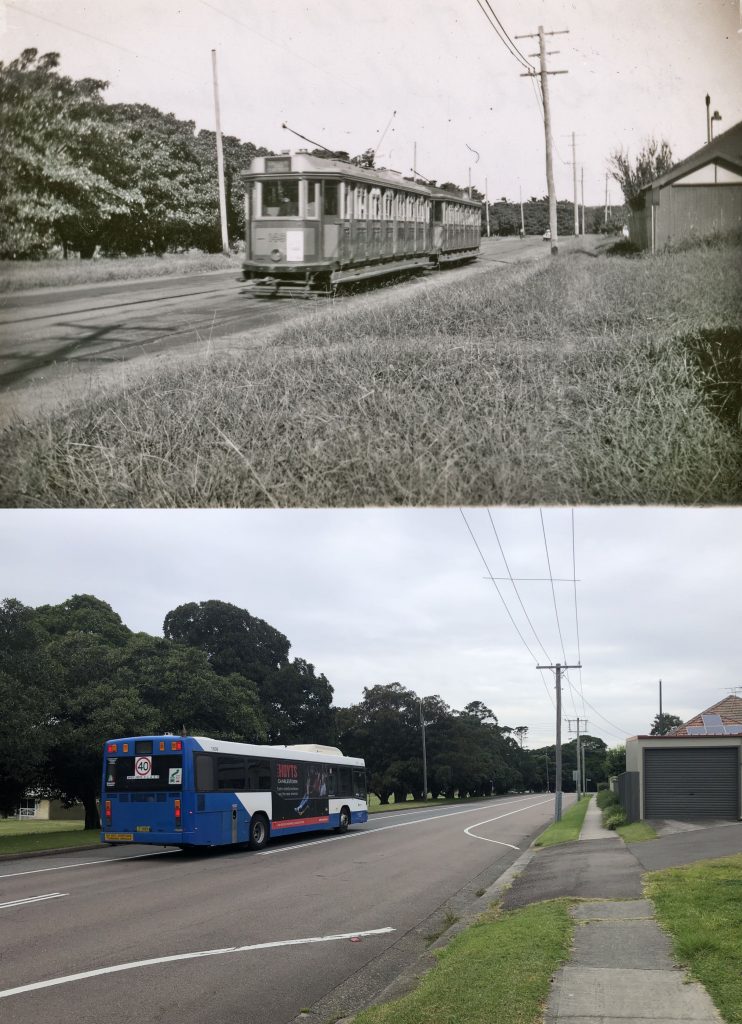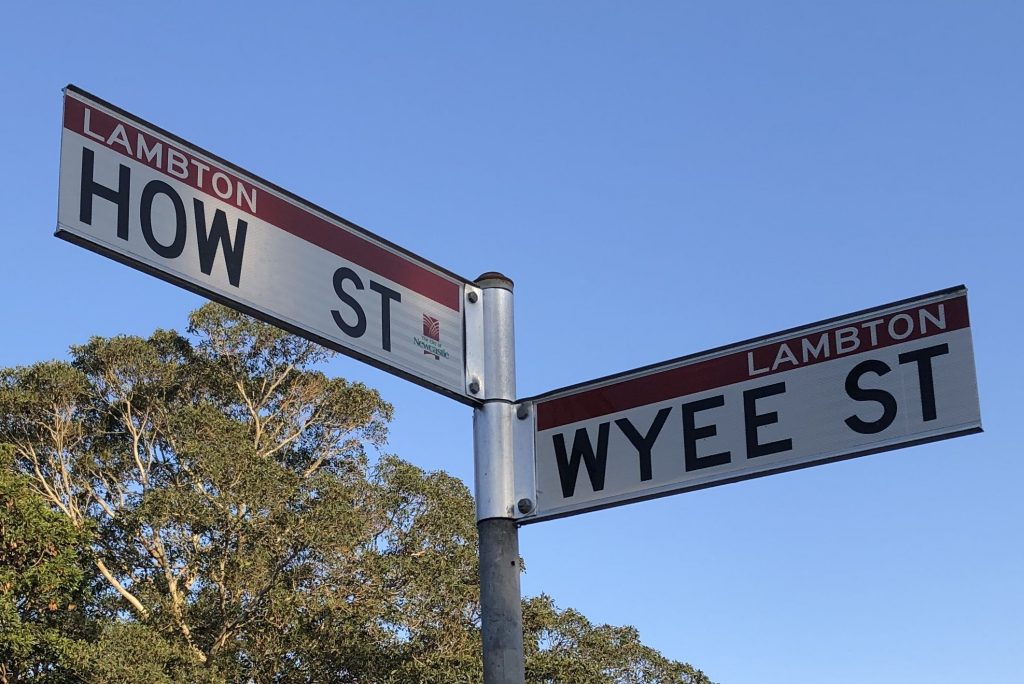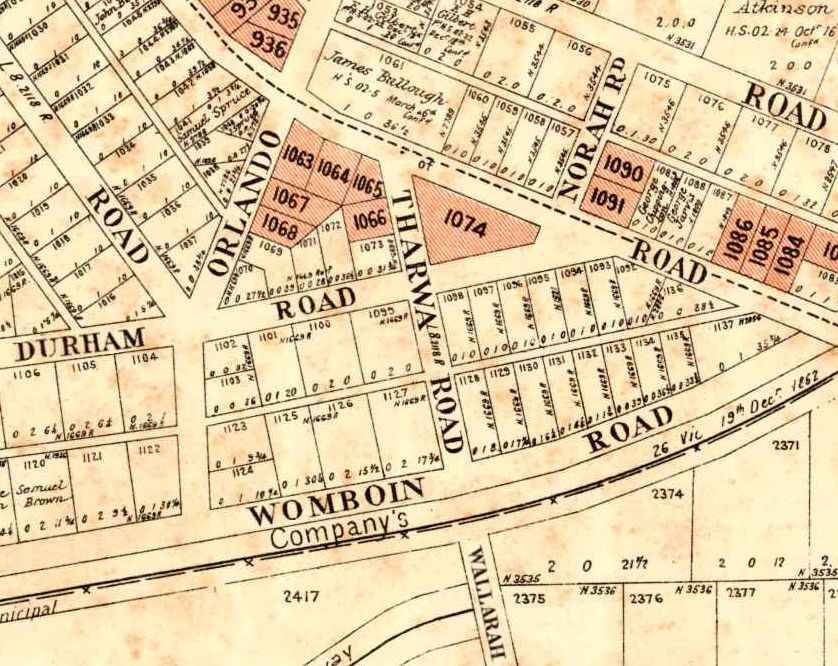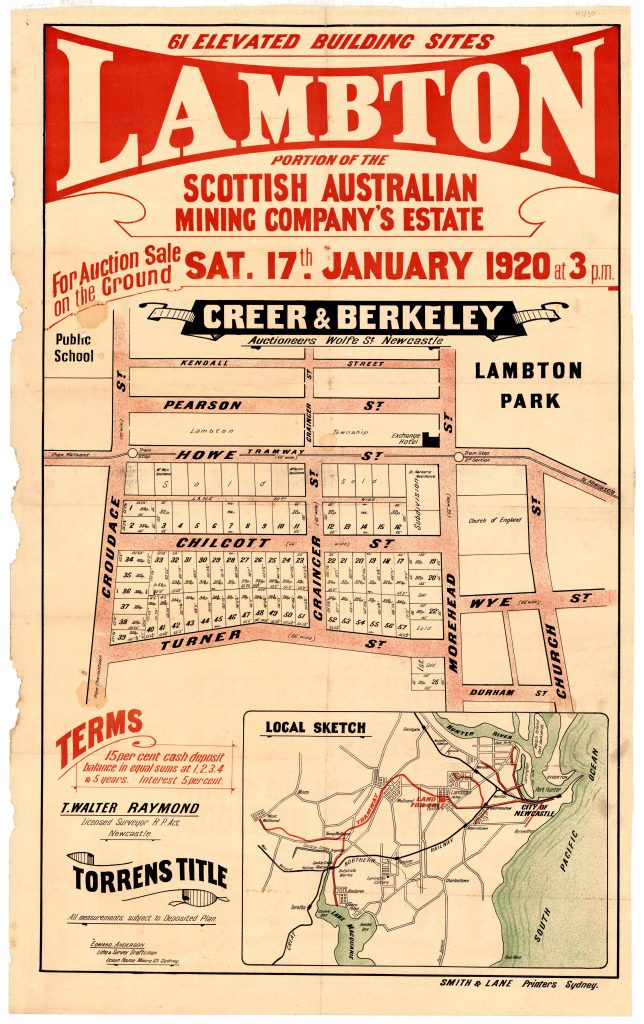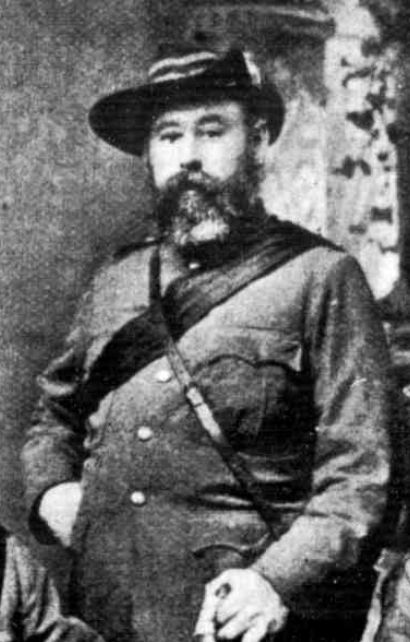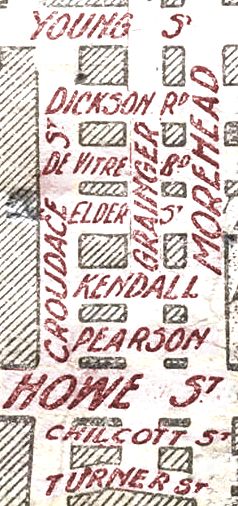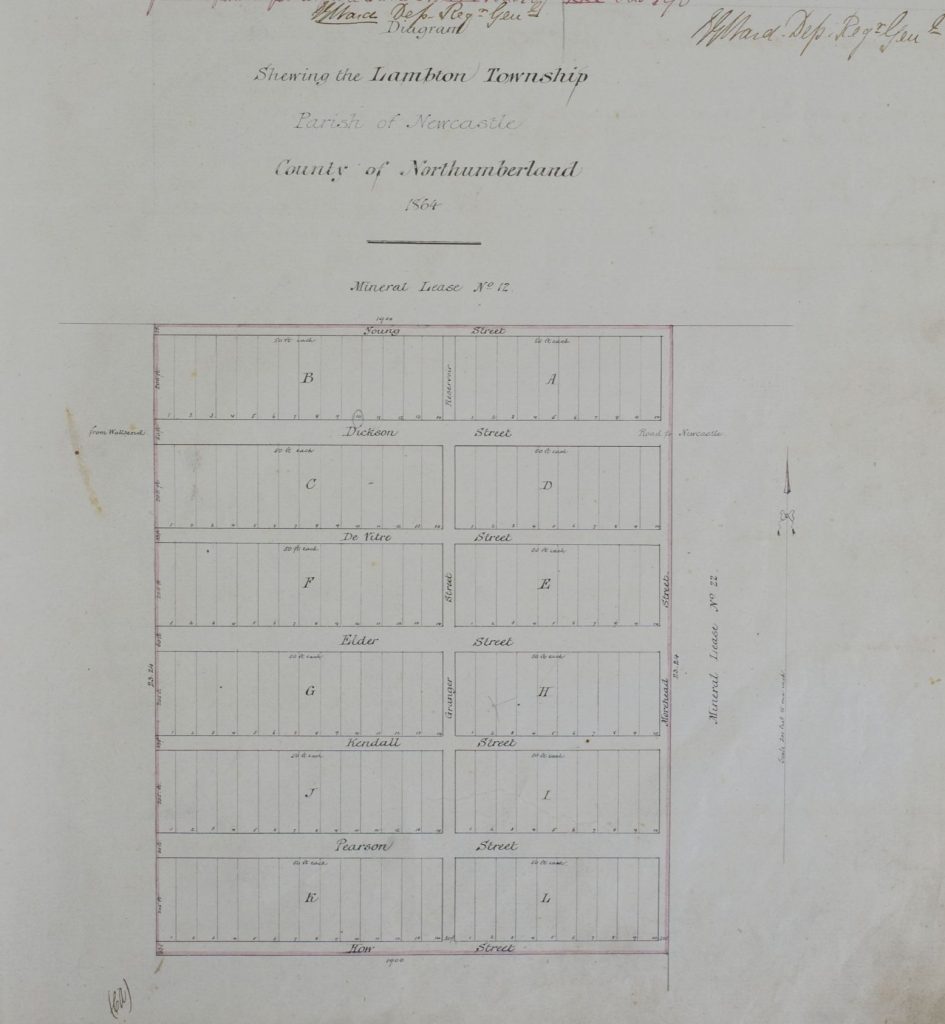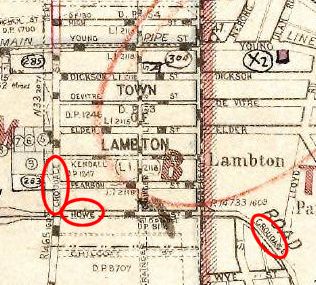Lambton may have begun as a mining town, but it takes more than miners to make a town. Among the first of hundreds of people who came to Lambton after the mine opened in 1863, were Scottish immigrants Daniel and Ann Morgan. Daniel is reported to have built the fourth house in Lambton. Around 1866 he started a grocery and drapery business, leasing a building appropriately known as “The Pioneer Stores”.
In 1873 Morgan had his own premises erected in Grainger St. Within two years he had a larger store and residence erected at 127 Elder St, to accommodate a growing business and the raising of three sons and seven daughters. The sign on the front advertised the store as a grocers and drapers, a common combination in those days. Often associated with drapery was millinery, and a close inspection of the right-hand window of Morgan’s store reveals a collection of ladies’ hats on display. This is a reminder that although only the “Sons” appeared in the store name, the daughters were an integral part of the family business.
Daniel Morgan suffered poor-health for his last 20 years, and died on 22 August 1896, aged 62. Two days later he was conveyed by train from Waratah station to Sandgate Cemetery for burial. The Lambton correspondent for the Newcastle Morning Herald reported that “The event cast quite a gloom over this town, as the deceased and his family held a high place in the esteem of all classes of the community.”
Following Daniel’s death, his wife Ann and his children continued to operate the store. Ann died in 1915 aged 76, and was buried at Sandgate with her husband. In 1918 the children sold the business, which continued to trade as “G Spruce and Sons”. The sale brought to end over 50 years of commercial contribution to Lambton by a pioneering family.


The article above was first published in the October 2020 edition of The Local.
Additional Information
Photo date
The University of Newcastle Cultural Collections Flickr site has three photographs of Morgan’s store (photo 1, photo 2, photo 3), all obviously taken on the same day. While two of the photos are captioned with a year of 1909, the third is captioned as 1904. I can only assume this is a transcription error, someone mistaking a written digit 9 to be a 4.
Other photos
Morgan’s store can be seen in a 1904 panoramic photograph of Lambton, taken from the North Lambton hill looking south. Also in the photo, can be seen the Commercial Hotel (demolished 2019) at 121 Elder St. Note that there is a bit of an optical illusion here that makes it look like Morgan’s building is further back than Elder St, maybe on Kendall St.
However, Elder St is rising in elevation as you move west from the Commercial Hotel, which means that Morgan’s shop is several metres higher than the hotel. This lack of vertical alignment with the hotel, Morgan’s building being smaller than the hotel, and the compressed depth of field of the photo, makes it appear as though the building is further back on Kendall St.
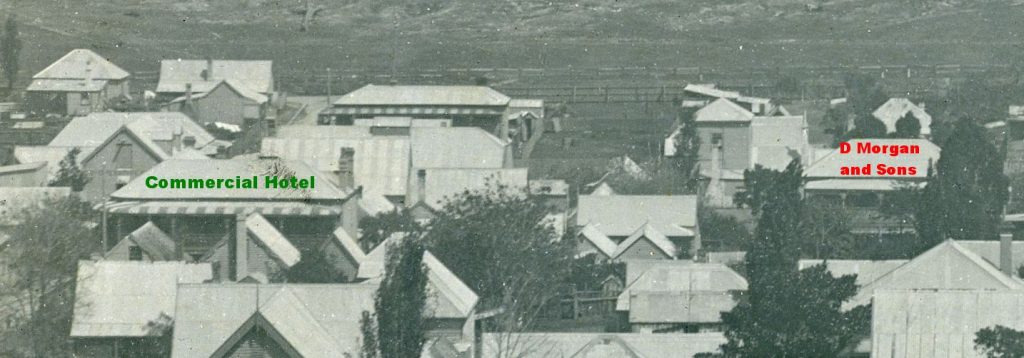
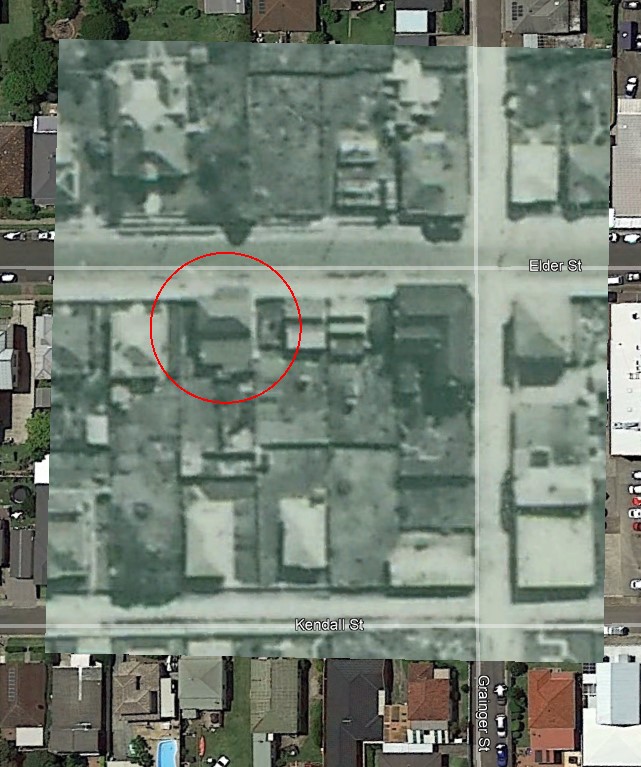
Elder Street renumbering
In the article, I state the address of Morgan’s store as 127 Elder Street. This is the modern address. When Morgan built the store around 1875 streets in Lambton were not numbered, numbering only being introduced to Lambton in 1927. In Elder St the numbers commenced at 1 at the east end and increased travelling westwards, so that Morgan’s Store was 47 Elder St. In 1934 a bankruptcy notice for the subsequent proprietors of the store, G Spruce and Sons, states the address as 47 Elder St.
Some time later around 1948, in order to accommodate the houses built on Elder street extension to the east of Lambton park, Elder street was renumbered, adding 80 to existing numbers on the south side. Thus the site of Morgan’s store became 127 Elder Street.
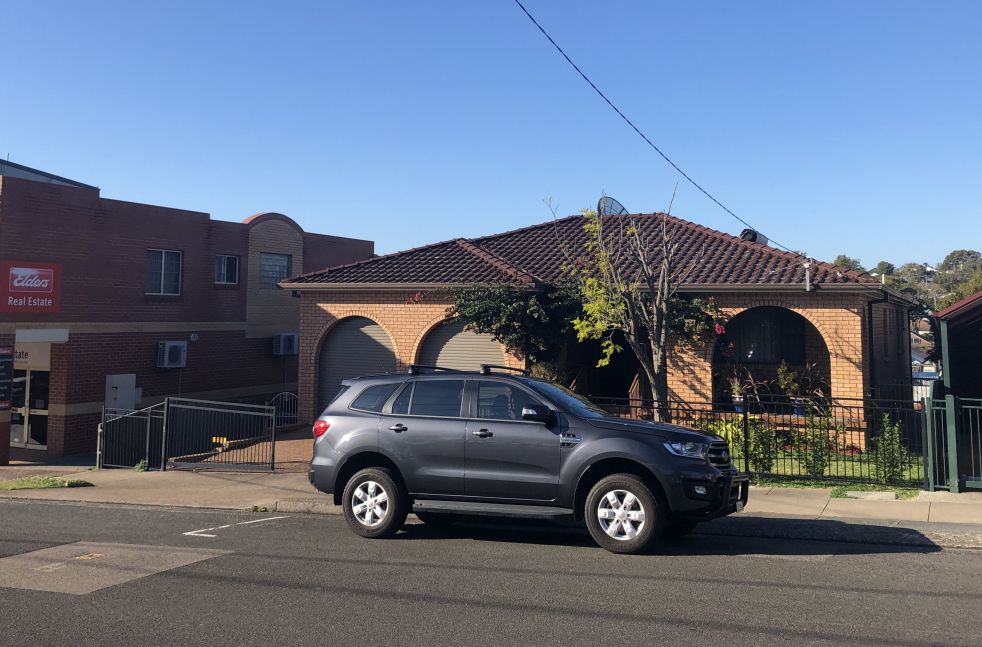
The increase of 80 in the renumbering can be seen in the case of W Baker’s bakery shop. An advertisement in August 1946 states the address as 39 Elder St.
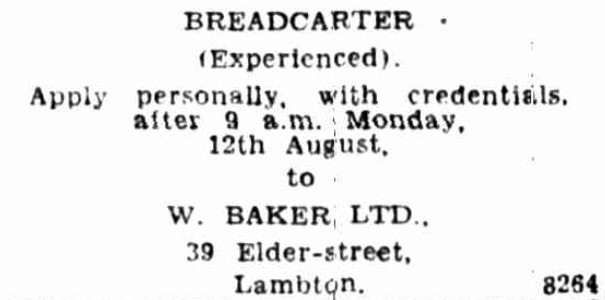
By March 1948, an advertisement shows the address for W Baker has changed to 119 Elder St.

A photo from Margaret Henry’s research paper on the bakery shows the bakery building on the south-east corner of Elder and Grainger Streets, which today is 119 Elder Street.
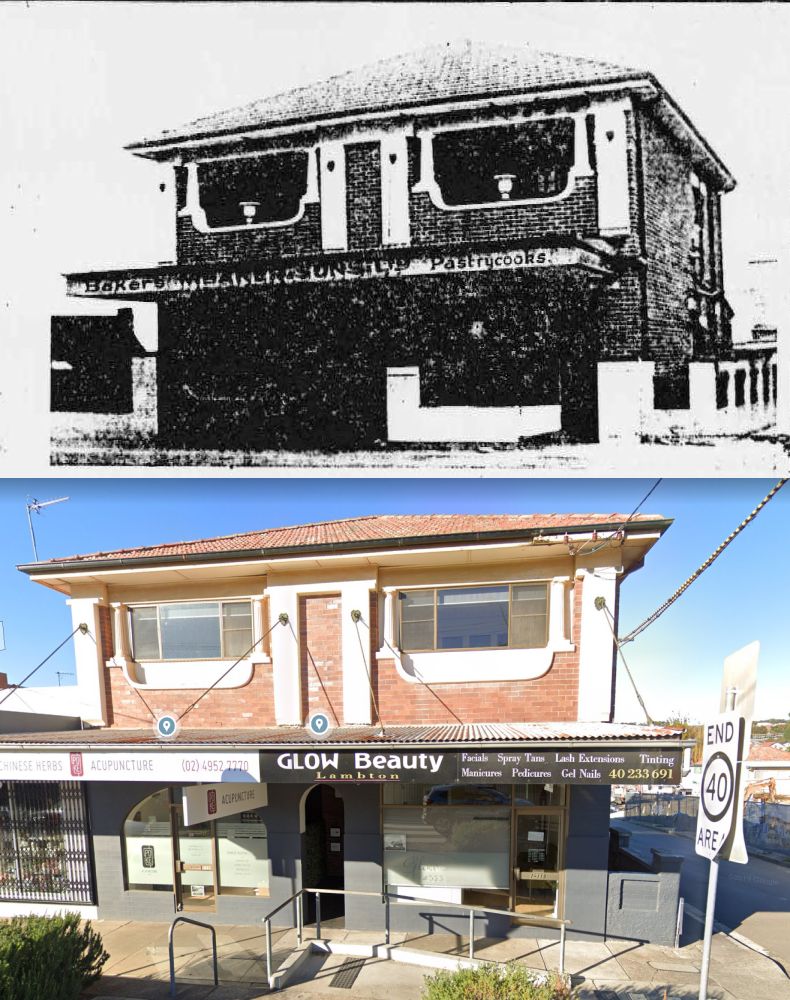
An advertisement from 1941 also shows the increase in 80 with the Commercial Hotel given as 41 Elder St, which later was 121 Elder St.
Newspaper articles
| Article Date Event Date | Notes |
|---|---|
| 9 Apr 1869 | First mention of Daniel Morgan in Trove, signatory on a petition against the proposed Mulibimbah Municiplaity. |
| 4 Sep 1873 | "TO BE LET— THE PIONEER STORES, LAMBTON. THE above STORES, with Dwelling-house now occupied by Mr. Daniel Morgan." |
| 25 Oct 1873 | "Two places of business are now in course of erection in Grainger-street— one by Mr. Daniel Morgan and the other by Mr. Shoesmith." |
| 13 Mar 1875 | Notes from Lambton Council meeting regarding the kerbing and guttering of the south side of Elder St indicate that D Morgans store is now in Elder Street. |
| 18 Mar 1876 | After building new premises in Elder street, Daniel Morgan makes a voluntary contribution of £1 to Lambton Council towards street improvements. |
| 25 Aug 1896 22 Aug 1896 | "Mr. Daniel Morgan, aged 62 years, an old and highly respected resident of this town, after an illness extending over a number of years, passed over to the great majority on Saturday last, at his esidence, Elder-street." |
| 24 Aug 1896 24 Aug 1896 | Funeral of Daniel Morgan, and burial in Sandgate cemetery. |
| 7 Jan 1915 6 Jan 1915 | Death of Ann Morgan (widow of Daniel), aged 76. |
| 16 Feb 1918 | Morgan's business sold to “George Spruce and Sons.” |
| 24 Jul 1920 18 Jul 1920 | "The death has occurred at Lambton of Miss Margaret Morgan, from congestion of the lungs. She was born at Minmi 58 years ago, and since her infancy had lived in Lambton. She was the third daughter of the late D Morgan, and was employed in the business of Morgan and Sons as milliner up till within a few years."
Note that this article erroneously referes to Margaret Morgan as being the third David Morgan is an error. The tombstone inscription at Sandgate cemetery clearly shows that she was the daughter of Daniel Morgan. (The error probably arose because she had both an uncle and a brother named David, and it had been 24 years since her father Daniel had died in 1896.) |
| 28 Feb 1934 | Bankruptcy notice for "G. Spruce and Sons, 47 Elder-street, Lambton".
Note that at some later time, Elder street was renumbered, adding 80 to existing numbers on the south side, so this address became 127 Elder St. |

